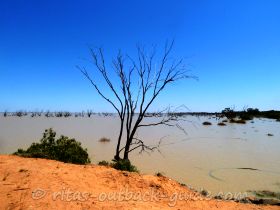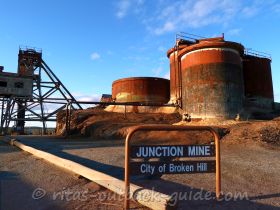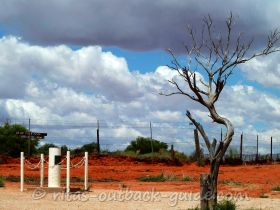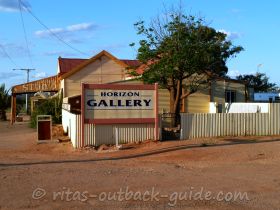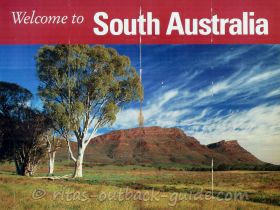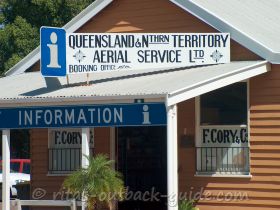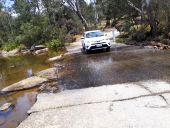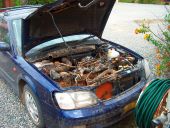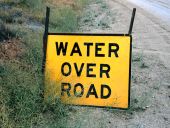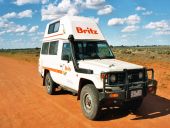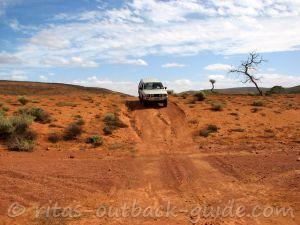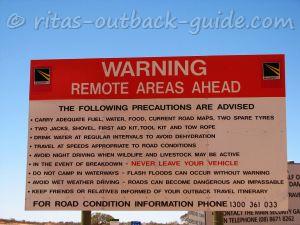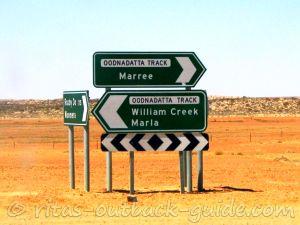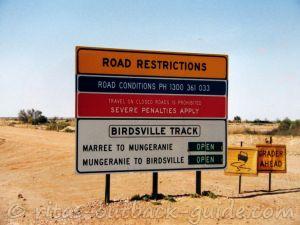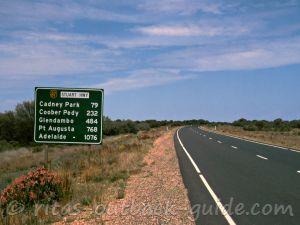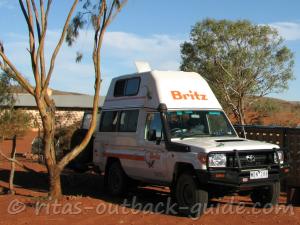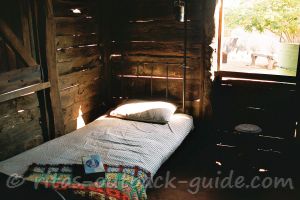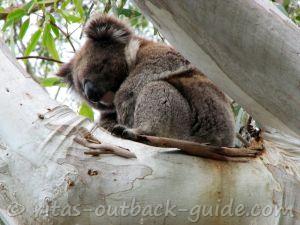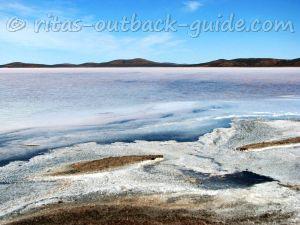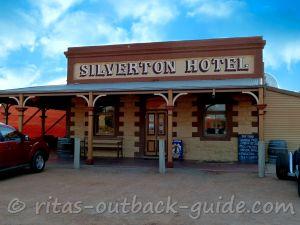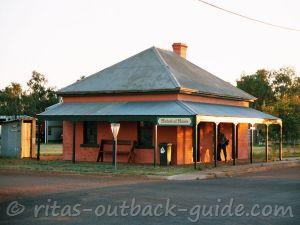Broken Hill Australia
Attractions & history of the Silver City
The history of Broken Hill is a story of trials and triumphs. The
discovery of the rich line of lode in Outback New South Wales was an
important event in the young history of Australia.
Broken Hill owes
it's existence to a young German boundary rider who discovered the rich ore body, that became later known as the Line of Lode, in 1883.
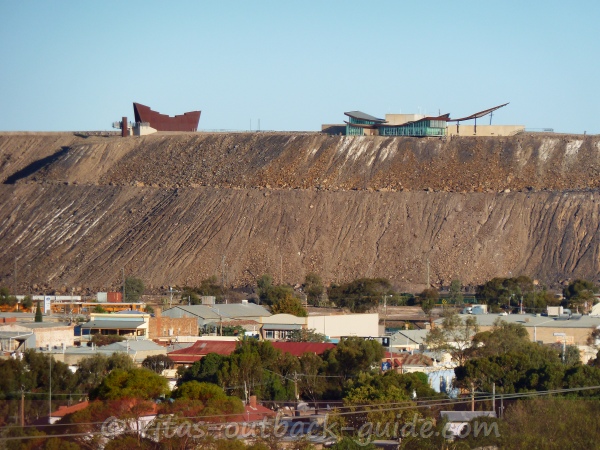 The mullock heap that divides Broken Hill
The mullock heap that divides Broken HillView from Joe Keenan Lookout
The Line of Lode Miner's Memorial on the edge of the mullock heap commemorates the 900 miners who lost their lives while working underground.The memorial is the building on the left in the photo above.
Today, Broken Hill is the main centre in the far west with all modern
amenities. Stay a couple of days and explore the city & its
surroundings before you head off to see famous places in Outback NSW,
for example Silverton, Corner Country, Menindee Lakes and the
Darling River.
Broken Hill is divided in a northern and southern part by the
railway line and the huge mullock heap (waste material from the mines).
The city centre is north of the mullock hills, Argent Street has been
the main road since the early days.
The beauty of the Outback landscapes, the magic of colours,
glowing sunsets and deep blue skies, have attracted artists and
photographers, and last but not least travellers, to visit and stay in
this major centre in New South Wales' far west.
What to read on this page - Table of Content (TOC)
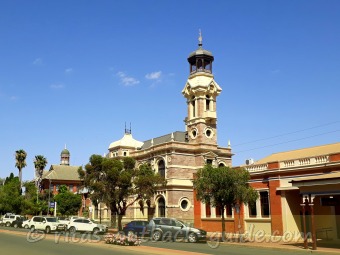 Facade of the old town hall - still impressive
Facade of the old town hall - still impressive
The Town Hall (1890-1891) in Argent Street is a fine example of Victorian Italianate style architecture.Most of the building was demolished in the 1970s, but thankfully, the beautiful facade remained.
How to get to Broken Hill Australia
Distances to major cities:
Sydney 1,167 km; Adelaide 508 km; Mildura 296 km
How to get there?: The Barrier Hwy connects
Broken Hill to the east and west with other major roads which lead to
Adelaide, Sydney and other destinations. Read more about the trip along the Barrier Highway.
From Mildura in the south take the Silver City Hwy to get to "the hill".
The Indian Pacific rail service from Sydney to Perth stops twice a week for the journey in each direction. There is a Countrylink train connection with Sydney, and a coach service to Dubbo to catch more trains.
Quick Facts
-
Population: approximately 17,700
- City area: 179 km²
- State: New South Wales
- Elevation: 315 m
- Post Code: 2880
- Climate: Hot and dry desert climate, Broken Hill and the surrounding areas are well-known for major dust storms. Average rainfall is only 235 mm
- Time zone: While NSW is in the Australian Eastern Standard Time zone, Broken Hill and surroundings (Yancowinna County) follows the Australian Central Standard Time.
- Heritage listing: The longest running mining town entered the National Heritage List in January 2015
- Nick names of Broken Hill: Silver City, The Hill
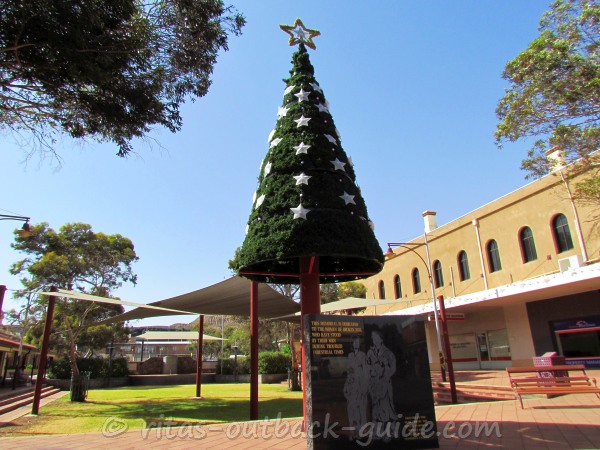 Town Square with Christmas tree and the Women's Memorial
Town Square with Christmas tree and the Women's MemorialAttractions in Broken Hill
You'll feel like being in a "chemistry laboratory" when you walk
around in the city centre, as many streets are named after minerals.
Beryl, Sulphide, Chloride, Cobalt are just a few examples. Other streets
are named after members of the town government and mining officials.
It is said the Silver City is a living museum, and yes, you are
reminded of the early days by interpretive signs and the presence of the
beautiful historical buildings.
Take the two-hour signposted Heritage Trail to discover outstanding buildings. Don't forget your camera!
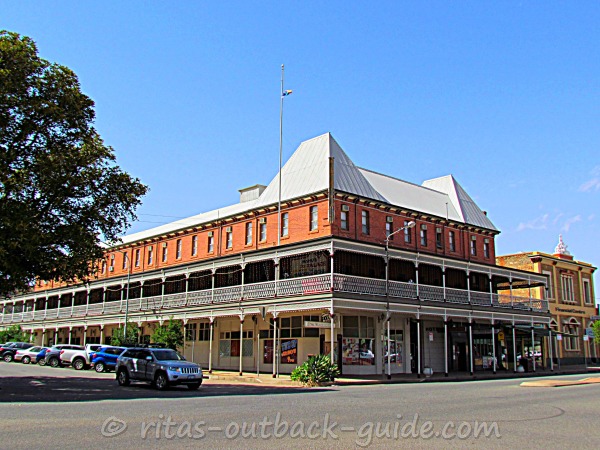 The heritage listed Palace Hotel in Argent Street
The heritage listed Palace Hotel in Argent StreetThe cast iron veranda of the Palace Hotel (1899) is classified by the National Trust as the longest in NSW.
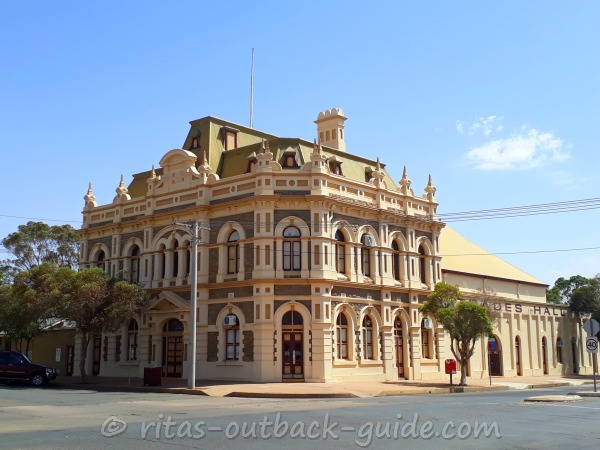 Trades Hall corner Sulphide & Blende Streets
Trades Hall corner Sulphide & Blende StreetsThe Trades Hall (1898-1905) is a most impressive building. Trade Unions have been always important in the mining town, and the Trade Hall has been home to the union movement since the early days. If you want to celebrate a special event in style, you can hire the Trades Hall.
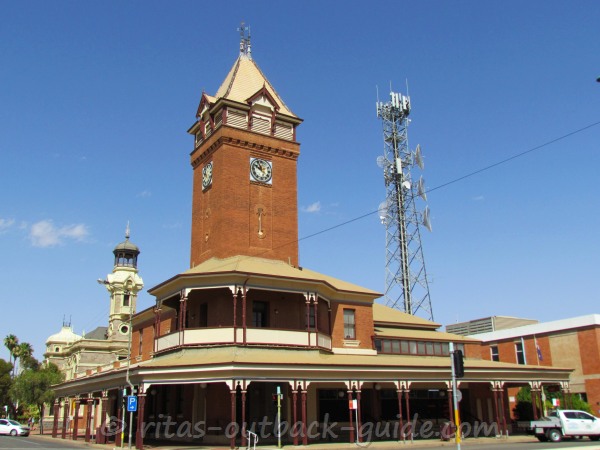 Post Office
Post OfficeThe red brick Post Office (1890-1892) was designed by James Barnet. The first post office in Broken Hill opened in 1886, but it soon was considered too small for the booming mining town.
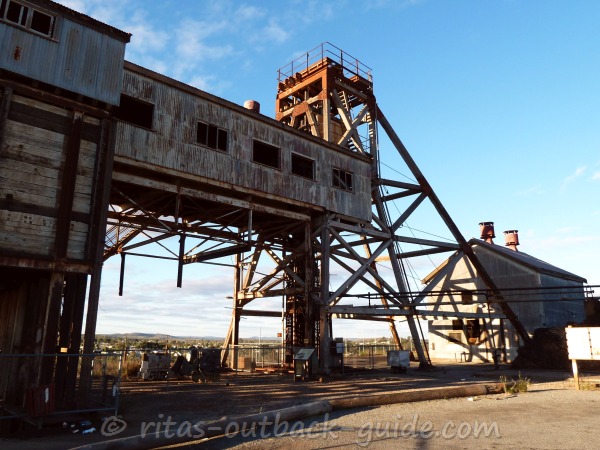 Junction Mine
Junction MineJunction Mine, Menindee Rd, was one of the earliest leases, pegged out in 1884. Junction Mine was worked until 1972. It is now open to visitors who are interested to see how a mining site worked. Browne's Shaft, the concentration mill and other structures are features on the site. Go in late afternoon to take amazing photos.
What to do
There is so much to do and see in and around Broken Hill. Take your time and stay a couple of days to discover the sights.
- Lookout points to enjoy Broken Hill's panorama include Joe Keenan's Lookout at Kaolin St., Block 10 lookout accessible from Galena St. and the Line of Lode at the end of Federation Way.
- If you really want to experience the hard life of miners in the 19th century, join a walk-in tour of Daydream Mine. The mine is 13km off Silverton Rd, and about 20km from the city. Daydream Mine started its short operation in 1882, a few years before the mining boom began in the Silver City.
- Visit the School of the Air (Lane Street) and the Royal Flying Doctor Service (at the airport). Both institutions have an invaluable impact on people living in the remote Australian Outback.
- See the The Living Desert Flora & Fauna Sanctuary on the outskirts of the city to learn about the flora and fauna of the Barrier Ranges. The Sculpture Symposium is another attraction within the reserve.
- Take a drive to Silverton, the old mining settlement on the edge of the desert. Enjoy the stunning sunset from the Mundi Mundi lookout with a drink and some nibbles.
- Visit Menindee and discover Australia's pastoral history during a visit at the large Kinchega Woolshed in Kinchega National Park
History of Broken Hill
The Wiljakali Aboriginal people had lived in the Broken Hill region for more than 40,000 years when the first Europeans arrived in the far west of New South Wales.
The city is surrounded by the undulating hills of the Barrier Ranges,
named by Charles Sturt in 1844. It was Sturt who mentioned a "broken
hill" that appeared as having a break in it.
It was exactly in these broken hill(s) where Charles Rasp discovered one
of the world's richest silver-lead-zinc ore body. It didn't take long
until a thriving mining town developed, and mining has been an important
part of the Silver City's economy since then.
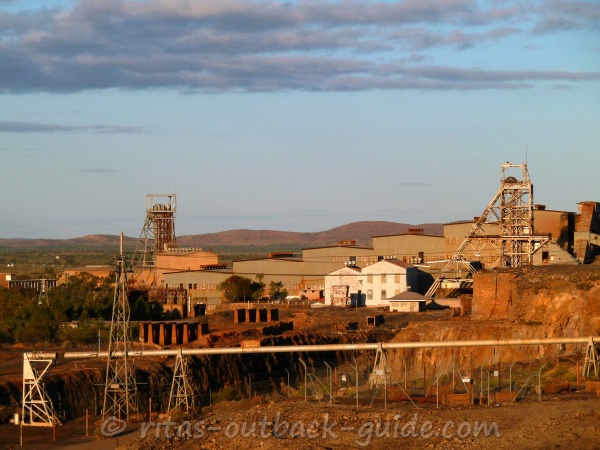 The old north mine
The old north mineTimeline of European history
- Surveyor-General Sir Thomas Mitchell was the first white man in the area. Only three years later, in 1844, Charles Sturt named the Barrier Ranges and mentioned a "broken hill". Although Sturt's expedition failed to find the Australian inland sea, their mapping and descriptions of the far north-west helped to open up this unknown region.
- Pastoralists followed the early explorers in the 1850. This was the beginning of major changes for the local Aborigines. Flocks of sheep, fences and mining stopped their traditional nomadic life.
- Charles Rasp, a German boundary rider who
worked at Mount Gipps station pegged the first claim on top of the
"broken hill". Rasp thought the hill would contain deposits of tin, but
first samples examined in Adelaide showed quantities of lead and zinc
with traces of silver.
On September 5, 1883 he registered his mining lease. Mount Gipps station manager George McCulloch, James Poole, David James, George Lind and George Urquhart joined and together they formed the "syndicate of seven".
It took nearly two years until finally rich silver chlorides were found.
In 1885 the "Syndicate of Seven" registered the Broken Hill Proprietary Company or BHP. The big Australian mine put Australia onto the world's economic stage. - Broken Hill became a municipality in 1888. The
foundation stone for the impressive town hall was laid by Sir Henry
Parks in 1890. The new town hall was designed in Australia-Italianate
style and built with stone from the Block 14 mine.
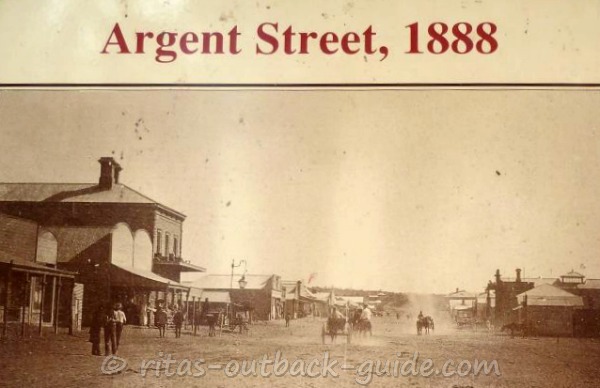
- Argent Street runs parallel with the ore-loaded hill. In the early days it was just a sandy, or muddy street without defined footpaths. The early buildings were constructed of timber and iron. Water and food was short, dust storms were common, nevertheless, Broken Hill had a population of more than 20,000 by 1891. It is hard to imagine how poor living conditions must have been for the early miners and their families.
- More civic buildings, the police station, courthouse and post office were built in the 1890s, along with schools and the technical college.
- 1892 the Stephens Creek reservoir and reticulation system was built and improved living conditions in the town. Yet, conditions for the miners were still poor, hundred of men were killed in the mines.
- At the turn of the century 27,000 people lived and worked in Broken Hill, and the town had 60 licensed hotels.
- Following bitter industrial disputes in the early 20th century, the Broken Hill Barrier Industrial Council was formed in 1923. It was an affiliation of 18 unions. As a result, working conditions in the mines finally improved.
- The Broken Hill Proprietary Company (BHP) hasn't been the only mining company in Broken Hill. Actually, BHP ventured into steel manufacturing and later into petroleum exploration. "The big Australian", as BHP once was known, merged with the Anglo-Dutch Billiton to form the world's largest mining company in 2001.
Where to stay in Broken Hill
Broken Hill has full town facilities, a large number of supermarkets, shops, hotels & motels.
You
can use the search tool in the right column of this page to check accommodation,
or learn about my favourite places to stay in the city.
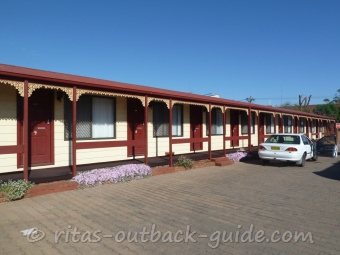 Daydream Motel
Daydream MotelDuring most visits in the Silver City we stayed at the Daydream Motel. The rooms are comfortable and clean, this is a great place if your are looking for a budget accommodation.
Check the rates for the Daydream Motel at HotelCombined.
For our stay at New Year's Day this year (2019), we were looking for a touch of luxury. We decided to stay at the Red Earth Motel, and loved it. Check it out!
Visitor Information Centre
The modern centre on the corner of Blende & Bromide Streets offers useful information for visitors, plus a wide range of souvenirs.
The centre is open daily (except Christmas Day) from 8:30am to 3 or 5pm (closing times vary). The friendly staff helps you to get the most out of your visit, they are also happy to book accommodation for you.
Broken Hill has played an important part in the history of Australia. The city has a lot of charm, friendly people and much to explore beyond. Discover the "accessible Outback". Drive on sealed highways and feel the vast distances and the grandeur of the Australian Outback.
Since my first stay in Broken Hill nearly twenty-five years ago, I return at every opportunity to this wonderful city. I hope you enjoy the city as much as I do.
Discover destinations in the far west of NSW
Explore famous places like Silverton, Corner Country, Menindee Lakes and the Darling River
The only city in this part of NSW has a lot to offer. Stay a few days to discover all attractions
Visit the one of the remotest stores in the Australian Outback
A town with lots of character and the stunning Mundi Mundi plain
See ancient mountains, open plains, glistening salt lakes
Discover history & tales along the Matilda Way
The articles below help you to plan your journey
- Home ›
- Travel the Barrier Highway ›
- Broken Hill Australia
- Home ›
- Outback New South Wales Overview ›
- Discover the Silver City
